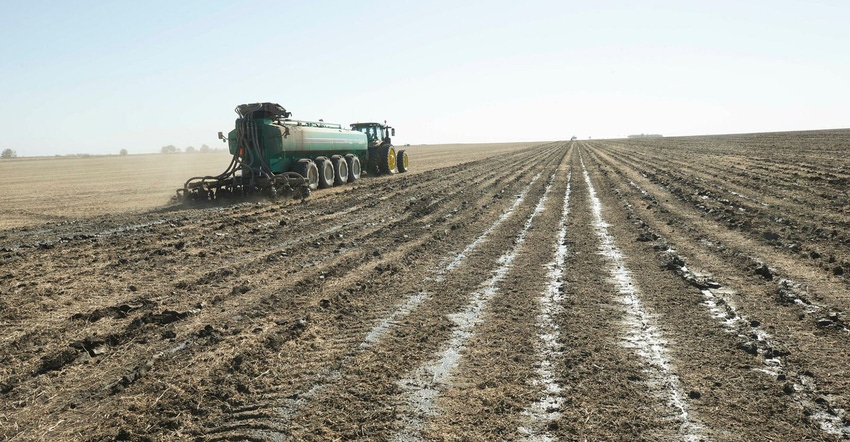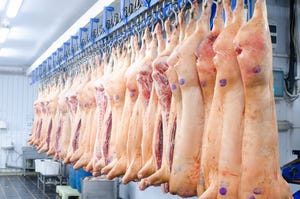Be responsibly aggressive this fall with manure application
It’s extremely important that producers take advantage of the fall window in order to free up manure storage for the winter.
July 31, 2019

By Patrick Maschhoff, Associate Director of The Maschhoffs Environmental, and John Kroeger, Senior Environmental Operations Manager
We have one recommendation for those applying manure this fall — be responsibly aggressive.
Many producers across the Midwest were hit with a lengthy wet spring, which delayed planting and interrupted spring-applied manure plans. This is on top of what, for many, was a challenging, wet fall in 2018.
Therefore, we highly recommend pig producers make fall-applied manure a priority. The natural freeze-thaw cycle will alleviate any compaction issues come spring. Of course, this assumes the soil temperature is below 50 degrees F. So, be responsibly aggressive this fall with manure application.
The other important thing is to start planning now. Make sure your custom applicator and nutrient consultant know the plan. This wet 2019 spring means a lot of people will be pushing to get fall gallons applied. Don’t wait until everyone is in the thick of application to confirm nutrient plans. Your goal should be to have everything ready to go as soon as the crop comes off the field.
Also, a lot of folks are likely considering changing up rotations or going to corn-on-corn as prices rebound. This can also help empty storage ahead of 2020 planting.
Additionally, others have applied manure ahead of soybean planting in the past. While it’s best reserved for the corn crop’s fertility needs, it does have beneficial effects for soybeans. In these cases, the soybean plant will utilize the nitrogen from manure, rather than through the nitrogen fixation process.
One final note on soybeans — depending on your location, you may have an opportunity in late-spring/early summer of 2020 to apply manure ahead of double-crop soybeans. Of course, this is not recommended after a wet spring due to compaction issues. However, it can provide an opportunity for those areas where manure storage is running tight.
Finally, everyone is aware that a late harvest is coming in 2019. Manure application will be shifted back in terms of priority and timing. That said, it’s extremely important that producers take advantage of the fall window in order to free up manure storage for the winter.
Sources: Patrick Maschhoff and John Kroeger, The Maschhoffs, who are solely responsible for the information provided, and wholly own the information. Informa Business Media and all its subsidiaries are not responsible for any of the content contained in this information asset.
You May Also Like
.png?width=300&auto=webp&quality=80&disable=upscale)


